How'd He Do This?
How on Earth did a crippled old man with a heart condition, who's barely able to lift 40 pounds, manage to get a 250-pound appliance up and into that hole in the wall on his own?
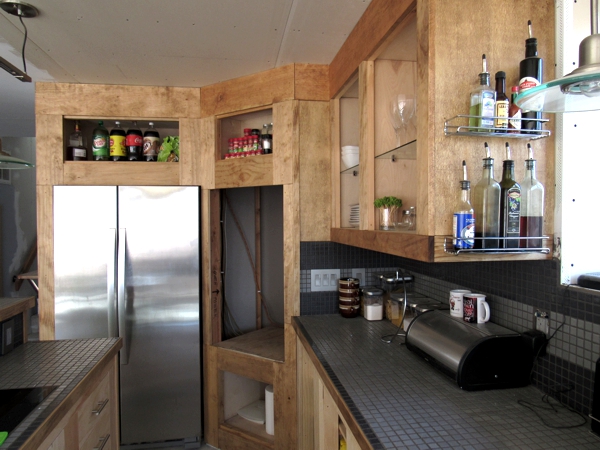
On the morning of 3 April 2021, I awoke in the wee hours obsessing over the problem, and after four hours of careful planning, I methodically prepared for the task over the course of the next five hours. I began by partially dismantling the oven: I removed the door (it had to come off for installation anyway), and popped the microwave off the top—it was maybe 35 pounds, and was held in place with only three screws. This significantly reduced the size and weight of the oven. Next, I built a temporary platform out of scrap lumber the same size, shape and height as the one on which the oven would live (below left). I tied the two platforms together with a heavy-duty steel strap (below right) so that the temporary platform couldn't move under any circumstances.
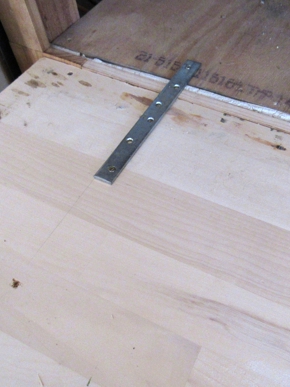
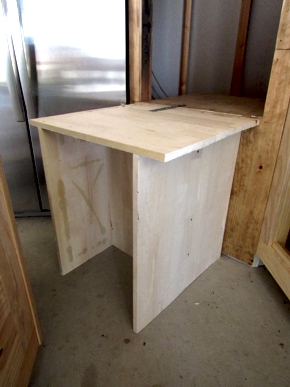
Then I built a ramp up to the temporary platform (below left): this would raise the oven up to a point where I could simply tip it onto the temporary platform. I loaded the oven onto a hand cart and secured it with a ¼-inch steel rod for safety (below right). At that point I took a good rest so I'd have the maximum strength and stamina I could attain for the next all-important yet riskiest step—I was putting two thousand dollars' worth of appliance on the line. I rehearsed the move (save for the final tipping) a couple of times so I'd know more or less what to expect, then I took a deep breath and went for it.
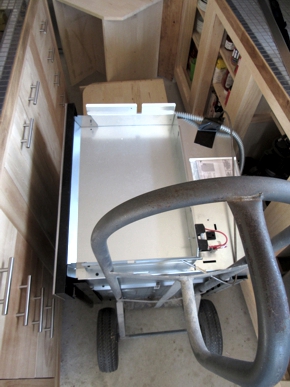

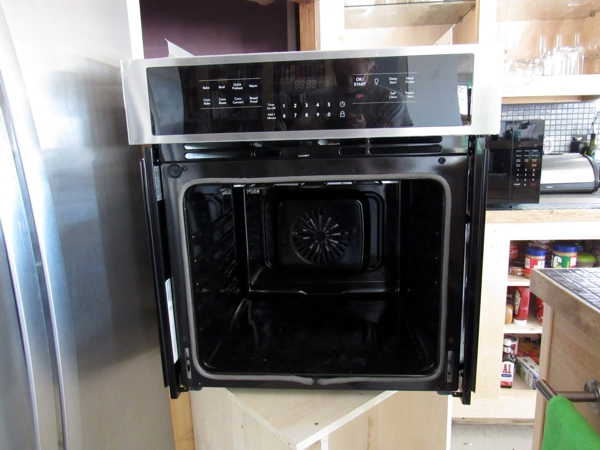
After maneuvering the oven up onto the temporary platform (above), I reattached the microwave, slid the assembly into place, and dismantled the ramp and temporary platform. And that metal strap? Since the oven covered one end of it, there was no way to remove it, so I simply tucked it under the oven where it will remain hidden for all time. Once I'd secured the oven to the surrounding woodwork, I installed the bottom trim, reattached the door, and peeled off all of the protective film. Amazingly, I pulled this all off in about a half hour, start to finish.
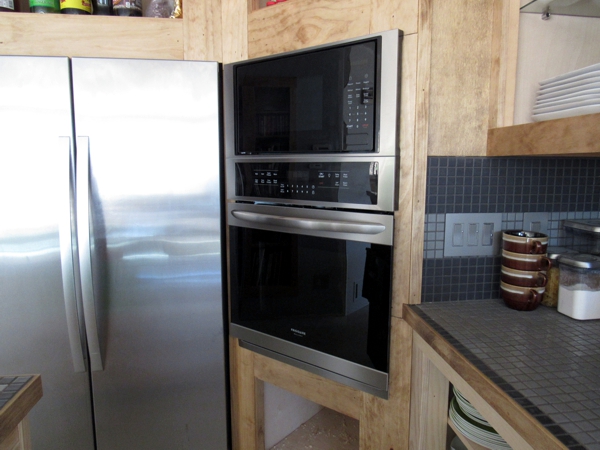
It was strange to think that the hardest part was yet to come: making the electrical connection. The reason this was so demanding is that the box was located in the cabinet under the oven, requiring that I work while lying on the floor—a severe physical challenge for me. After an hour, I completed the connections, limped up to the garage, and threw the breaker. When I came back down, I was greeted by a functional microwave, but a totally dead oven. My heart (what there is left of it) sank. Did I get a dud right out of the box, just like my first washing machine? I refused to believe it. So I began an intense troubleshooting exercise.
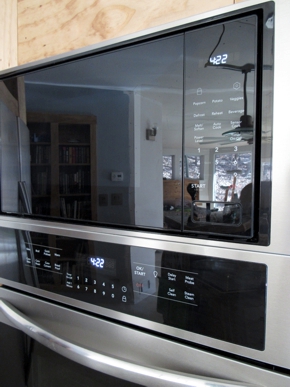
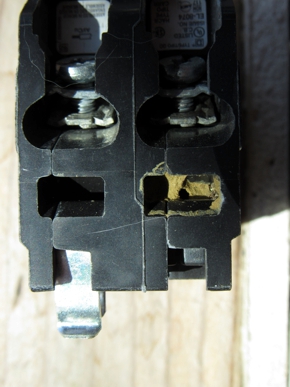
After an hour of testing and testing and more testing—a fair bit of it on the floor—I came to discover that it was a bad circuit breaker: it appears that a mud wasp, or other mud-making insect, got inside it and fouled the mechanism (above left). Well, I simply was not going to be denied the satisfaction of seeing the oven clock light up, at the very least, so I replaced the bad breaker with the one for the dryer (I didn't need to dry clothes right away anyway). Eureka! At 4:22 PM, I had two digital clocks blinking at me. My job here was done. And I went off to order some brownie mix...
